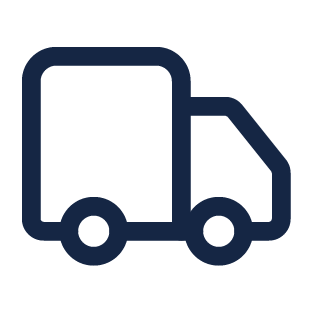Why planning & optimisation tools are game changers for fleet operators
In the fast-paced world of transport and logistics, every kilometre matters. The difference between an optimised route and an inefficient one impacts not just fuel consumption, but also time, customer satisfaction and profitability.
For fleet operators, the challenge isn’t merely moving from A to B; it’s about doing so in the smartest way possible. With rising costs, sustainability targets and increasing customer expectations, route planning and optimisation has evolved from a “nice-to-have” to a business necessity.
But what does that look like in practice? Let’s break it down.

What is planning & optimisation?
Most fleet operators handle basic planning – assigning vehicles, managing schedules and dealing with unexpected disruptions. But how much of this process is truly optimised?
Planning and optimisation go beyond simple route mapping. It’s about maximising the use of every asset – tractors, trailers, vans, and drivers – while reducing costs and boosting efficiency. Advanced planning tools take a list of jobs, allocate them to available resources and continuously refine routes to create the most efficient plan.
This approach:
- Reduces mileage by selecting the most efficient paths
- Cuts fuel costs amid volatile prices
- Prevents delays with live traffic insights
- Extends vehicle lifespan by reducing wear and tear
- Enhances customer satisfaction with accurate ETAs
- Fully utilises assets while identifying exceptions, such as spare capacity or workload overflow
In short, better planning means better business. The real challenge lies in real-time optimisation, especially when last-minute changes arise. Some solutions simply do it faster and more accurately than others, helping fleet operators stay agile in an unpredictable transport landscape.
Seamless integration: from planning to execution
The daily challenges
Finalising a plan is just the start… its success depends on seamless execution. Choosing the right planning and optimisation solution is important, but ensuring it integrates smoothly with the rest of your operation is essential.
For fleet operators, an integrated approach means:
- Live route monitoring to track vehicles and respond to delays
- In-cab navigation to guide drivers efficiently
- Real-time execution dashboards for dispatch teams to manage schedules
- Proof-of-delivery integration for instant job status updates
- Performance analysis to compare planned vs. actual routes and drive improvements
Why It Matters for Your Fleet
- Faster, more accurate job allocation
- Seamless last-minute adjustments
- Reduced manual workload for planners & drivers
- Higher on-time delivery rates
- Lower fuel costs & emissions
- Improved asset utilisation
- Enhanced customer service & driver experience
By bridging planning and execution, teams gain real-time control, reduce inefficiencies and keep operations running at peak performance.
Industry challenges
Fleet operators in Australia and New Zealand are navigating significant industry shifts. Those who adapt fastest will secure a competitive edge.

The last-mile delivery boom
The rise of e-commerce has accelerated delivery demand. The global courier, express, and parcel (CEP) market has grown by 10% in recent years, making fast, reliable deliveries more critical than ever.

Rising fuel costs
Fuel is one of the largest expenses for fleet operators. With prices continuing to rise, route optimisation isn’t just beneficial, it’s essential. By cutting unnecessary kilometres, businesses can significantly reduce fuel consumption.

Sustainability pressures
Both Australia and New Zealand are working towards net-zero carbon emissions by 2050. Transport is a major contributor to greenhouse gases, accounting for 21% of Australia’s and 17% of New Zealand’s total emissions.
Governments are tightening regulations, and businesses that delay action risk higher costs and compliance challenges. Efficient route planning helps companies save money while reducing their carbon footprint.
How smart planning tools solve industry challenges
Many fleet operators accept inefficiencies as part of the job. But with the right tools, businesses can transform these challenges into opportunities.
Planning and optimisation tools help by:
- Automating scheduling to reduce manual planning time
- Enabling dynamic route adjustments in response to real-time conditions
- Maximising vehicle loads to improve fleet utilisation
- Optimising routes for both speed and fuel efficiency
The result? Lower costs, smoother operations and happier customers.
Where to start?
If your fleet still relies on manual planning or outdated processes, now is the time to embrace a data-driven approach.
Look for planning and optimisation tools that offer:
- Real-time traffic integration for live route adjustments
- Automated scheduling to remove inefficiencies
- Seamless connectivity between planning and journey management platforms
In a fast-paced industry, every minute and kilometre matters. Smarter planning can be the difference between thriving and falling behind.
Take the next step towards a smarter fleet
Microlise’s Planning & Optimisation solution helps fleets cut costs, reduce delays and maximise vehicle use… all while integrating seamlessly with your existing systems.
It adapts routes in real time, handles last-minute changes and improves warehouse efficiency.
Whether you prioritise fast deliveries or full loads, it keeps your fleet running smoothly.





